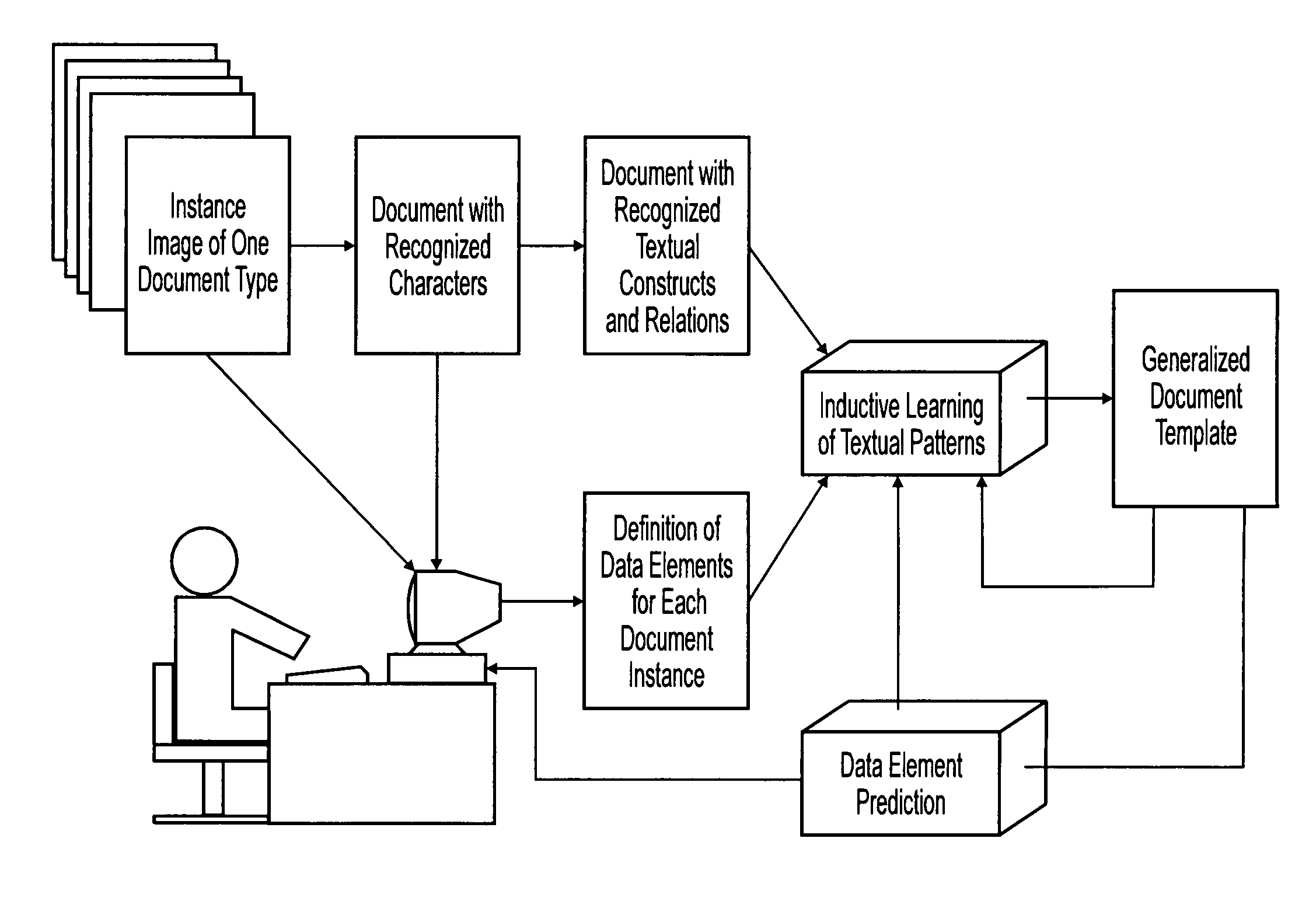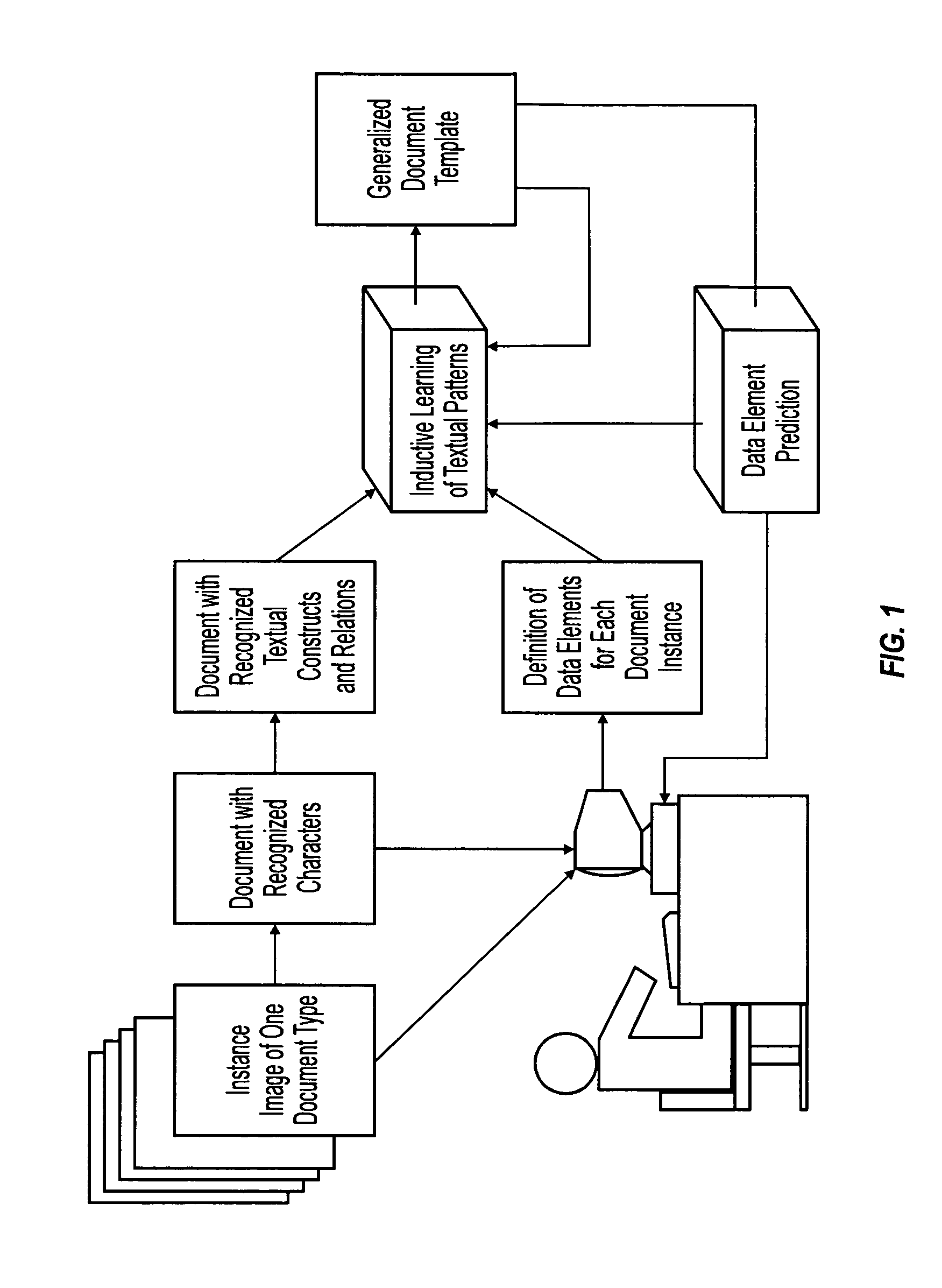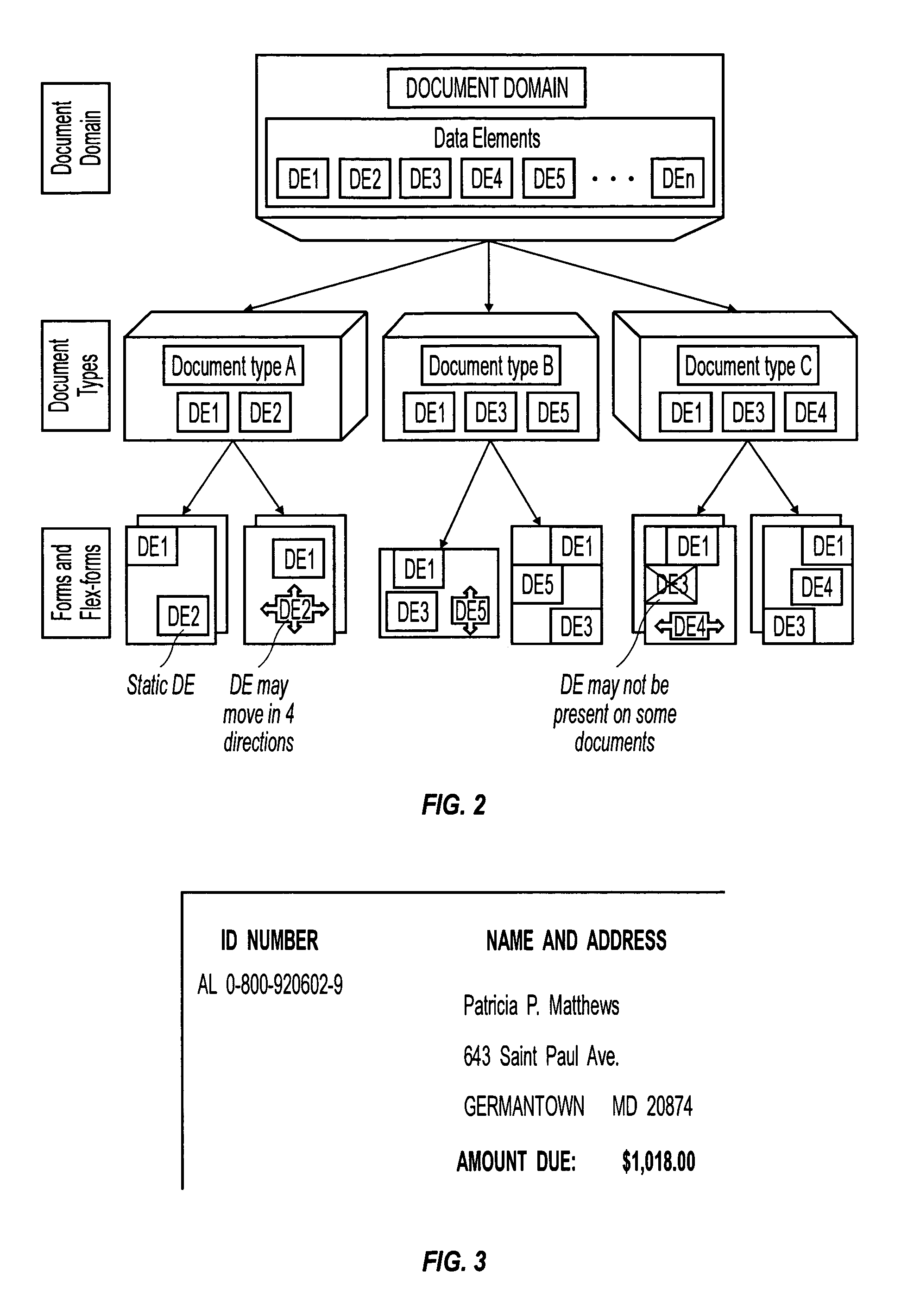Machine learning of document templates for data extraction
a document template and machine learning technology, applied in the field of machine learning of document template for data extraction, can solve the problems of document quality, time-consuming, and process requirements that are often beyond the capabilities of the current set of commercially available form processing systems, and achieve the effect of ensuring template quality and speeding up template developmen
- Summary
- Abstract
- Description
- Claims
- Application Information
AI Technical Summary
Benefits of technology
Problems solved by technology
Method used
Image
Examples
Embodiment Construction
[0041]The preferred embodiments enable one to reverse-engineer the process of encoding data in structured documents and to subsequently automate the process of extracting it. We assume a broad category of structured documents for processing that goes far beyond form processing. In fact, the documents may have flexible layouts and may include multiple pages. The data extraction method (DataX™) employs templates generated by the Inductive Template Generator (InTeGen™). The InTeGen™ method utilizes inductive learning from examples of documents with identified data elements. Both methods achieve high automation with minimal user input.
[0042]Reading documents is a relatively easy task for a human reader most of the time. This is due to the fact that the documents are prepared using some common assumptions about structuring documents, and authors intend to convey information in ways allowing readers accurate and efficient interpretation. The problem is, to what degree is it possible to re...
PUM
 Login to View More
Login to View More Abstract
Description
Claims
Application Information
 Login to View More
Login to View More - R&D
- Intellectual Property
- Life Sciences
- Materials
- Tech Scout
- Unparalleled Data Quality
- Higher Quality Content
- 60% Fewer Hallucinations
Browse by: Latest US Patents, China's latest patents, Technical Efficacy Thesaurus, Application Domain, Technology Topic, Popular Technical Reports.
© 2025 PatSnap. All rights reserved.Legal|Privacy policy|Modern Slavery Act Transparency Statement|Sitemap|About US| Contact US: help@patsnap.com



